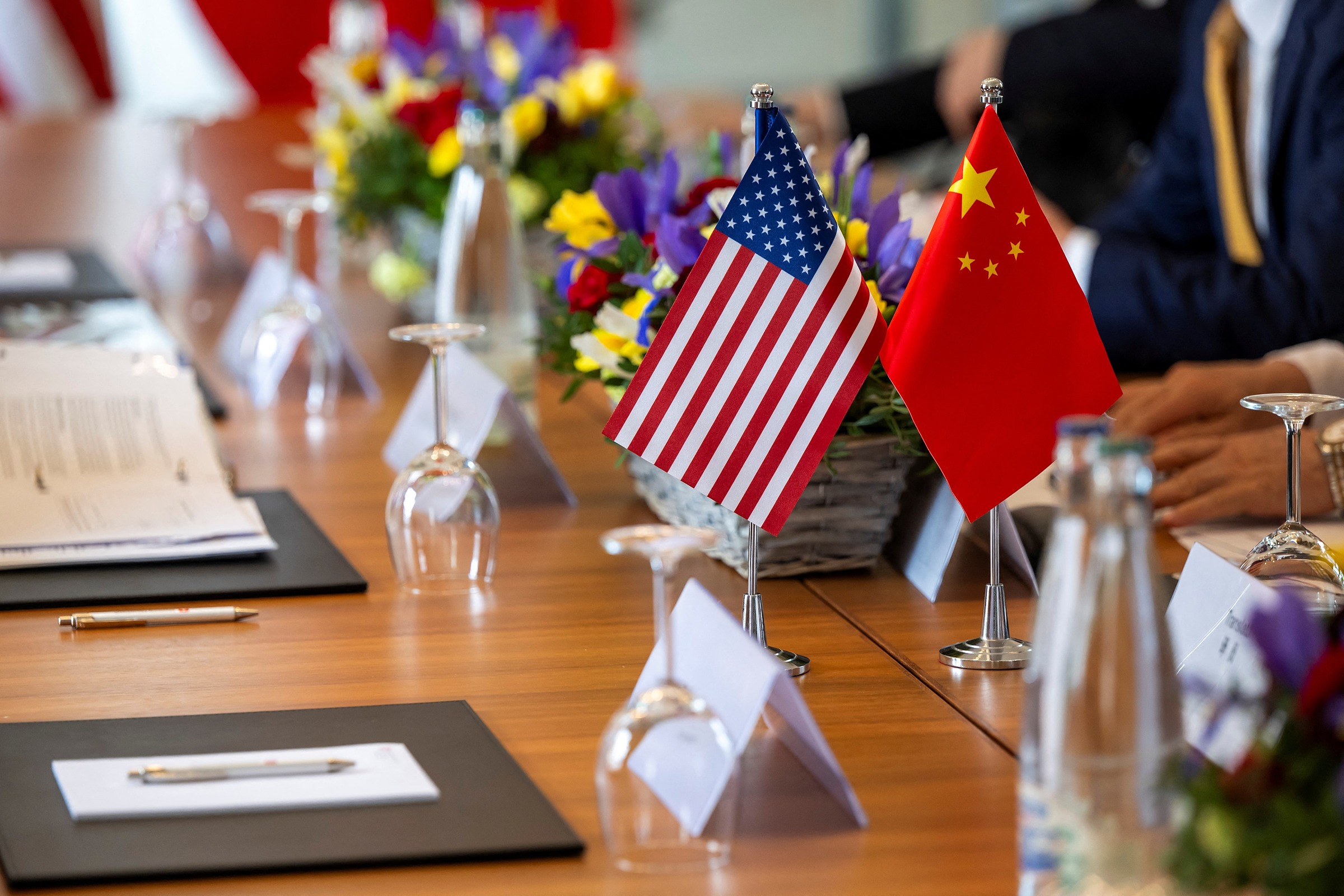The meeting comes as the August 12 deadline approaches. In early May, both sides agreed to significantly reduce tariffs within 90 days and reached a framework agreement a month later.
However, if a detailed agreement isn't reached before the deadline, the global supply chain could face further disruptions, as previously imposed tariffs by both countries exceeded 100%.
 |
US and Chinese flags at the negotiating table in May in Geneva. Photo: Reuters |
US and Chinese flags at the negotiating table in May in Geneva. Photo: Reuters
This round of US-China talks follows the US administration's recent trade agreement with the European Union (EU). Under the agreement, the US agreed to reduce tariffs on EU exports by 15%. In return, Europe agreed to purchase 750 billion USD worth of energy products, invest 600 billion USD in the US, and purchase additional US military equipment.
Analysts don't expect a similar breakthrough in the US-China talks. However, they anticipate a continued postponement of tariffs and easing of export controls, paving the way for a potential meeting between President Trump and Chinese President Xi Jinping in late October or early November.
"We're very close to a deal with China. Let's see how that plays out," Trump told reporters before his meeting with European Commission President Ursula Von der Leyen.
The two previous rounds of talks in Geneva and London significantly lowered tariffs imposed by Washington and Beijing. The flow of rare earth minerals, AI chips, and other goods between the two countries has also resumed.
However, broader economic issues remain unresolved. The US complains that China's export model is flooding the world with cheap products. Meanwhile, Beijing argues that Washington's export controls on technology products, under the guise of national security, are hindering its economic growth.
"Stockholm will therefore be the first meaningful trade negotiation round with the US and China," said Bo Zhengyuan at the consulting firm Plenum.
Analysts agree that compared to other partners, negotiations with China are more complex and time-consuming. China currently controls the global supply of rare earth minerals and rare earth magnets, materials essential for various industries, from military equipment to automotive manufacturing.
President Trump has indicated he will soon decide whether to visit China to address trade tensions. "The Stockholm meeting is an opportunity to lay the groundwork for this visit," said Wendy Cutler, Vice President of the Asia Society Policy Institute.
US Treasury Secretary Scott Bessent also expressed his desire to extend the August 12 deadline to prevent tariffs from returning to 145% on Chinese goods and 125% on US goods.
However, China is likely to demand further reductions in overlapping tariffs, which currently add up to 55% on most goods. Beijing also wants Washington to relax export controls on high-tech products, arguing that this will help reduce the trade deficit.
During Trump's first term, most Chinese industrial goods faced a 25% tariff when entering the US. In his current term, they face an additional 20% tariff for not controlling fentanyl trafficking into the US, along with a 10% retaliatory tariff like other trading partners.
Bessent said he would discuss with Chinese officials the need for China to rebalance its economy, shifting from export dependence to boosting domestic consumer demand. However, this shift requires Beijing to address the ongoing real estate crisis and increase social security to encourage spending.
Michael Froman, former US Trade Representative under President Barack Obama, noted this has been a goal of US officials for two decades. "Whether the US can use tariffs to force China to fundamentally change its economic strategy remains to be seen," he said.
Ha Thu (Reuters)












